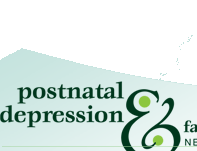 |

Mirtazapine
This section is written for medical professionals.
For consumer information, see Fact sheet on mirtazapine
- Mirtazapine is licensed in New Zealand for treatment of depression
- Available as Avanza
- Requires a special authority (SA) and to qualify two other antidepressants must have been trialed unsuccessfully.
- Last updated: November 2010
Summary
- There is limited data available on the safety of mirtazapine in pregnancy.
- It is probably not associated with major congenital malformations.
- Its use might be associated with a higher rate of spontaneous abortions and preterm neonates, but this needs more investigation.
- Based on very limited data, breast feeding whilst on mirtazapine is probably safe.
The decision to use psychotropic medication in pregnancy and breast feeding should be made weighing up the risks versus the benefits in each individual case. It should involve an informed choice with mutual agreement between patient and clinician.
Pregnancy
Category C
- There are case reports of women in which mirtazapine was used to treat depression or anxiety and hyperemesis gravidarum (1, 2, 3) (2). In this group there were no major congenital abnormalities, although one woman had a weight gain of 19 kg and developed gestational diabetes. One infant developed persistent pulmonary hypertension of the newborn and required treatment and neonatal intensive care for three days before being discharged healthy – there was little evidence that this appeared to be related to the mirtazapine.
- In another study (14), short term treatment of hyperemesis gravidarum with mirtazapine (less than two weeks during first trimester) was generally well tolerated and led to the birth of healthy newborns in three cases.
- A prospective comparative observational study followed a 104 pregnancies in which the fetus was exposed to mirtazapine and compared them to a group who took other antidepressants and a group taking known non-teratogens (5). In this study, 95% of the woman took mirtazapine in the first trimester, 25% took it throughout pregnancy. There was no increase in the rate of major malformations but there was an increase in the rate of spontaneous abortions in the mirtazapine group compared to women taking non-teratogens but it was not statistically significant (19% versus 10%).
- This was similar to rates in women taking other antidepressants (17%).
- In a systematic review of the effects of antidepressants in pregnancy (16) 35 studies relating to congenital malformations were found. Only 7 of these studies included women who had taken mirtazapine.
- There was also an increase in preterm births compared to women taking non-teratogens (13% versus 2%).
- A UK study followed 41 pregnant woman who took mirtazapine in the first trimester (6). There were eight spontaneous abortions, eight therapeutic abortions, 24 live births (of which four were premature – one premature baby had a patented ductus arteriosus).
- Another study followed an additional seven women who were exposed to mirtazapine either alone or in combination with other drugs during the first trimester (7). Duration of mirtazapine exposure varied from 1 to 11 weeks of gestation. All babies were healthy at term.
- Neonatal adaptation syndrome (NAS) can occur in infants of mothers who have used antidepressants near term. It is not certain whether this is due to perinatal toxicity or a discontinuation syndrome. Generally NAS symptoms in the newborn infant resolve spontaneously.
- It is generally unknown whether babies exposed to mirtazapine toward the end of pregnancy are at risk of NAS.
- A case has been reported of mild-moderate hypothermia until day 10 in monozygotic twins born to a mother treated throughout pregnancy with mirtazapine (11).
- There is one case report of mirtazapine associated NAS (characterised by hyper-excitability, tremor and tachycardia) for two days in a baby born to a 30-year-old mother with diabetes type I and hyperemesis. Confounding this case was prematurity (at 34 weeks) due to fetal growth restriction and deteriorating preeclampsia(12).
- A retrospective Swedish study compared SNRI/NRI (mirtazapine, venlafaxine, mianserin and reboxetine) to SSRI exposure in 732 women and 737 infants (15). Their data indicated general similarities between use SNRI/ NRI and SSRI groups in preterm delivery and other neonatal complications.
- An increase in SNRI/NRI teratogenic properties was not demonstrated.
Lactation
Category L3
- Data on 10 breastfeeding woman who were being treated with mirtazapine suggests that mirtazapine is safe in breastfeeding (8, 9, 10). The weight adjusted maternal dose and the infant was a mean of 1.9% (8) and ranged between 1.8% – 4.4% (10) depending on post dose timing of samples. These are below what is generally accepted as a safe level (of less than 10%).
- Possible evidence of individual differences in infant elimination was suggested by one case of a baby breastfeed by a mother treated with mirtazapine (14). The baby slept better and was much heavier than its siblings at a similar age. Infant serum mirtazapine level was 37% of its mother’s serum concentration.
- There have been no adverse drug related effects documented in other babies breastfed whilst their mother was on mirtazapine (9) and all babies were achieving developmental milestones.
References
(1) Saks, et al. Treatment of depression, anxiety and hyperemesis gravidarum in the pregnant patient: a report of 7 cases. Arch Women Mental Health (2001) 3(4): 165-170.
(2) Rodhe, et al. Mirtazapine for treatment resistant hyperemesis gravidarum: rescue of a twin pregnancy. Arch Gynecol Obstet (2003) 268(3): 219-221.
(3) Kesim, et al. Mirtazapine use in 2 pregnant women: is it safe? Teratology (2002) 66: 204.
(4) Djulus, et al. Exposure to Mirtazapine during pregnancy: a prospective comparative study of birth outcomes. J Clin Psychiatry (2006) 67: 1280-1284.
(5) Biswas, et al. The pharmacovigilance of Mirtazapine: results of a prescription event monitoring study on 13,554 patients in England. J Psychopharmacol (2003) 17: 121-126.
(6) Yaris, et al. Newer antidepressants in pregnancy: prospective outcome of a case series. Reproductive Toxicology (2004) 19: 235-238.
(7) Kristensen, et al. Transfer of the antidepressant Mirtazapine into breast milk. Brit J Clin Pharmacol (2006) 63 (3): 332-327.
(8) Aichorn, et al. Mirtazapine and breastfeeding. Am J Psychiatry (2004) 161: 2325.
(9) Hale, TW. Medications and Mother’s Milk. Hale Publishing (2006).
(10) Klier, CM., et al. Mirtazapine and breastfeeding: maternal and infant plasma levels. Am J Psychiatry (2007) 164(2): 348-349.
(11) Sokolover, N., et al. Neonatal recurrent prolonged hypothermia associated with maternal Mirtazapine treatment during pregnancy. Can J Clin Pharmacol (2008) 15(2): e188-e190.
(12) Schwarzer, V., et al. Treatment resistant hyperemesis gravidarum in a patient with type I diabetes mellitus: neonatal withdrawal symptoms after successful antiemetic therapy with Mirtazapine. Arch Gynecol Obstet (2008) 277: 67-69
(13) Guelu, S., et al. Mirtazapine use in resistant hyperemesis gravidarum: report of three cases and review of literature. Arch Gynecol Obstet (2005) 272: 298-300.
(14) Tonn, P., et al. High Mirtazapine plasma levels in infant after breast feeding: case report and review of literature. J Clin Psychopharm (2009) 29(2): 191-192.
(15) Lennestal, R., Kallen, B. Delivery outcome in relation to maternal use of some recently introduced antidepressants. J Clin Psychopharm (2007) 27(6): 607-613.
(16) Udechuku,A., Nguyen T., Hill R., Szego K. Antidepressants in pregnancy: a systematic review. Australian and New Zealand Journal of psychiatry (2010) 44:978-996.
|
 |






